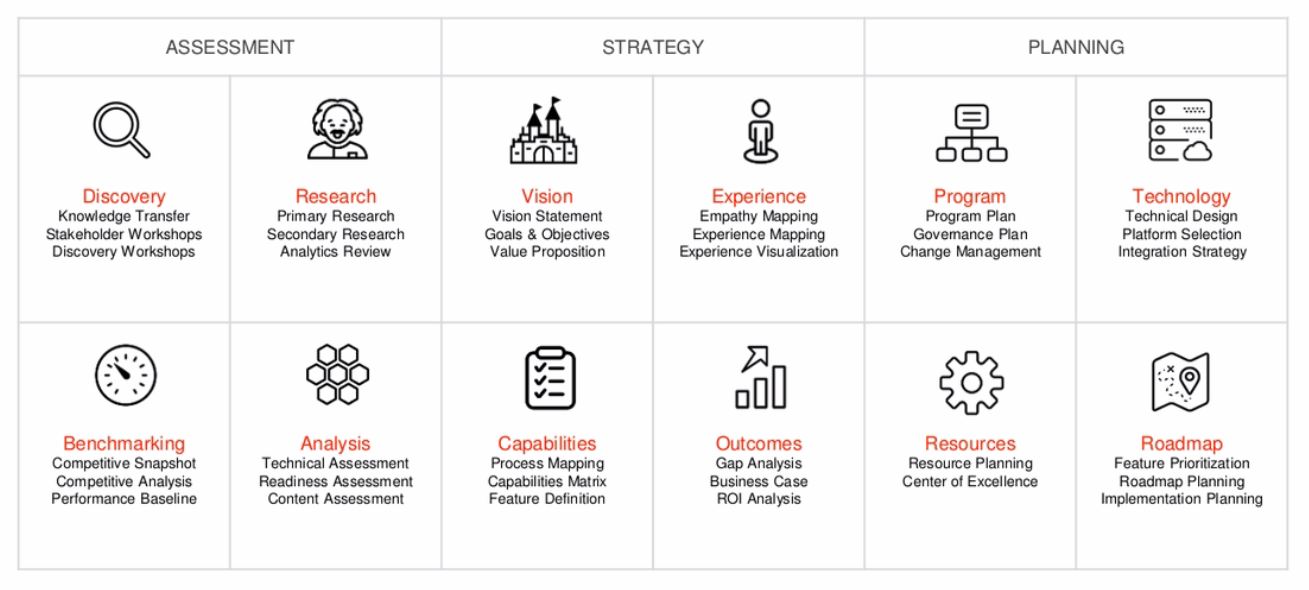Recent events across the retail and eCommerce landscape indicate that a digital disruption is afoot. And to succeed, commerce business models have to change to satisfy increasing customer expectations.
In this blog series, explore the three major areas where you can start innovating to transform your existing commerce business model – starting with customer experience.
Rising expectations of the always-on customer
Just a decade ago, the first iPhone was unveiled. At the time, the world was unaware how this device would forever change our lives – and the face of business. In 2017, 44% of the world’s population will own a smartphone. That’s an estimated 2.32 billion people that always have a computer within arms’ reach.1
Additionally, Forrester reports a significant increase in U.S. adults who are not only using mobile but also multiple devices.
94% of U.S. adults online use a laptop
75% use a smartphone
50% use a tablet2
Think of it this way: mobile devices, combined with the proliferation of other digital channels, have raised the bar for customer expectations. Customers are constantly connected and increasingly more difficult to engage. Breaking through the noise requires different types of business models and finding new ways to engage them.
Additionally, customers are more empowered than ever. Right at our fingertips is a fast, simple way to research products, services, or a company with access to reviews and ratings on social channels.
In the Age of the Customer, this wealth of information and constant connection has enabled customers to disrupt business. To stay competitive, you have to become customer-obsessed so that you can engage them in ways that are more meaningful.
Frameworks to re-vamp the customer experience
How do you go about satisfying digitally savvy, always-on customers? First, you have to define a plan for what customer experience and engagement means to your business. Tapping into data-driven insights is crucial to validate your plans.
The envision framework outlined below provides the 50,000-foot view before deploying any new experience. You set milestones to assess and understand where you are today, and then use that information to create a strategy and plan for deployment.

Envision Framework, Source: Perficient Digital
Using this framework, you need to analyze first-, second- and third-party data to gain insights that will drive your strategy and make the best use of quantifiable results that align with your company’s vision. This data will also help define your segmentation, allowing you to understand the most profitable segments and define corresponding customer journeys.
Then, set criteria for measuring your key performance indicators (KPIs) before moving forward to planning the deployment. In the planning phase, you begin to define road maps, technology implications, and how the underlying technology will enable the new experience.
Following the envision framework leads to another methodology we use – customer experience (CX) innovation. This framework establishes how you plan and differentiate across the customer experience for acquiring, engaging, and retaining your customers.
Before implementing this framework, your team must envision the customer experience and understand how your extended teams will support the delivery. In other words, how will you realistically implement your innovation plans across IT, marketing, operations, and eCommerce?
Our mantra is to think big, but start small and act fast to respond to the dynamics in today’s marketplace. The Envision and CX innovation frameworks are practical initiatives that facilitate this process and mobilize your teams.
Sources:
1 Strategy Analytics, 2016
2 “The State of Consumers and Technology: Benchmark 2017 US,” Forrester, June 2017
